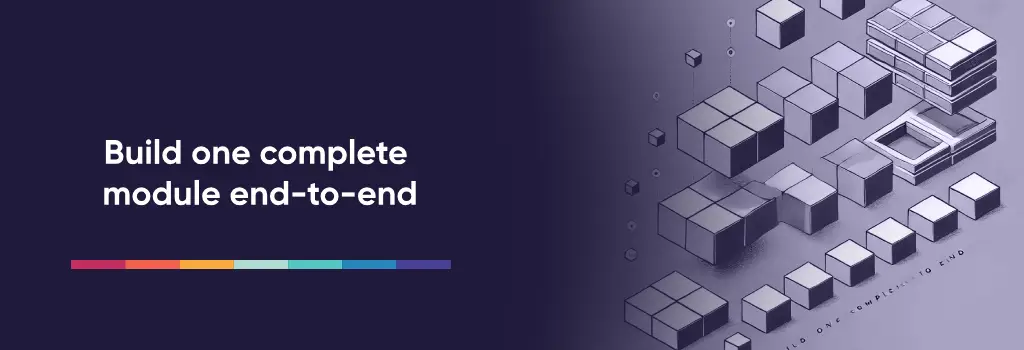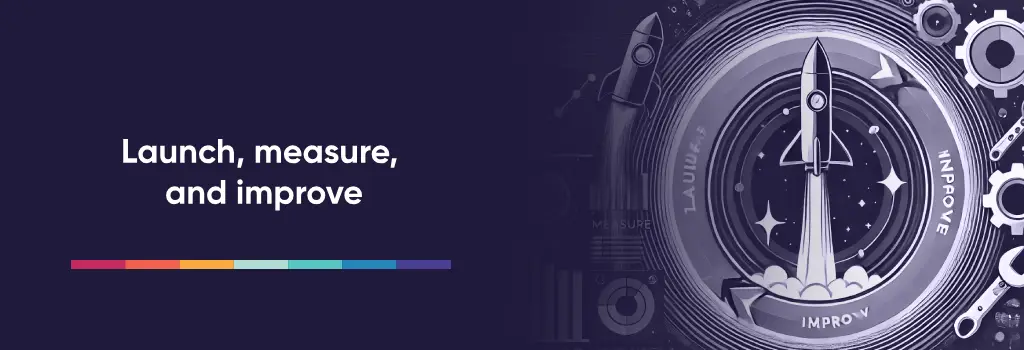Moodle gives you many ways to build courses, but the best results come from choosing a method that fits your constraints and then executing it with discipline. This guide distills practical patterns we use across real projects, from rapid builds to competency frameworks, and from assessment-first designs to interactive content. We start with strategy, prove the approach by building one complete module, then scale the pattern to an entire course and catalog. Finally, we show how to launch, measure, and improve so each run is better than the last. Use the checklists to keep quality high and the governance tips to protect consistency as your team grows.
I recently migrated my site to Mindfield from another host, and the experience couldn’t have been better. Mindfield kept working until they were certain that my site was operating as well as it was before, and they even helped clean up a few issues to improve my site’s performance – issues my prior host never mentioned. I also found Mindfield’s communication to be excellent. Before the migration, they prepared me for what to expect, and during the migration they kept me well-informed. No small feat considering that changing hosts is inherently stressful! They also provided clear and concise explanations when required. I’d highly recommend Mindfield if you’re looking for an IT consultant, developer, or host.
Jim Benedek
Jim Benedek
Owner, Student First Media Inc.
review Source: Google Reviews
Outline
Pick a build strategy that fits your context

Before anyone opens the course editor, decide how you will build and why. Strategy shapes everything that follows: which activities you choose, how you define completion, how you report learning, and how easily you can roll the course forward next term. A good strategy is explicit about constraints such as timeline, headcount, legacy content, compliance, and scale. It also clarifies where to trade convenience for control. For example, a template-first approach speeds up production for many similar courses, while a competencyapproach gives you stronger reporting and audit trails. You can mix methods, but start with one primary path so naming, completion rules, and gradebook design stay coherent.
Quick chooser
-
Template-first if you will clone the same structure many times or have multiple instructors.
-
Competency-first if you report to regulators or issue credentials.
-
Assessment-first if exams drive the course.
-
Interactive content add-on (H5P or SCORM/LTI) if you already have authored content or need rich activities.
How to decide
-
Time and people: small team on a short timeline → start template-first, core activities only.
-
Evidence of learning: strict proof of mastery → competency-first plus quiz analytics.
-
Existing content: legacy modules in Storyline or Captivate → SCORM with strict testing before rollout.
-
Scale: many run-dates or sections → template-first with date shifting and role separation.
Non-negotiables regardless of strategy
-
Naming standard for course shortname, sections, and activities.
-
Clear completion rules visible to learners.
-
Gradebook categories planned before you add items.
Build one complete module end-to-end

The fastest way to find design flaws is to build a vertical slice, not a scatter of unfinished pieces. One complete module functions as your blueprint: it proves the flow from orientation to content to practice to assessment, and it lets you validate workload, clarity, accessibility, and analytics before you scale. It also creates a live example for authors to copy, which raises consistency and reduces rework. Treat this module as a product: write success criteria, review it with two or three stakeholders, and test it with a handful of learners. Only after it meets the quality bar should you replicate the pattern across the course.
Structure
-
Start here page: what to learn, how long it takes, how success is measured.
-
Content spine: Book for multi-page reading, Page for quick notes, URL for references.
-
Practice: H5P or low-stakes Quiz with specific feedback.
-
Assessment: Assignment or Quiz aligned to the outcome with a rubric or question bank.
-
Reflection and support: Forum for Q&A, quick survey for muddiest point.
Configuration steps
-
Course format: Topics, section naming like “Module 1: Fundamentals”.
-
Activity completion: mark by view for content, by grade or passed threshold for assessments.
-
Gradebook: categories such as Participation, Assignments, Quizzes, Final.
-
Restrictions: use access restrictions to stage content after completion where helpful.
Quality bar for the module
-
Accessibility: headings in order, alt text, captions or transcript for media.
-
Mobile: test on a phone, keep images under sensible sizes, avoid huge PDFs.
-
Load: avoid nested iframes and very large SCORM files in one section.
-
Feedback loop: enable quiz statistics and item analysis, add a tiny exit survey.
If you use H5P
-
Create a shared content bank, standardize aspect ratios, set attempt or score based completion, reuse assets across modules.
If you use SCORM or LTI
-
SCORM export with suspend-resume and completion set in the authoring tool, upload as SCORM activity, test in at least two browsers.
-
LTI: register tool, set privacy and grading scopes, add as an external activity, mirror its completion in course completion rules.
Scale from one module to a full course and catalog

Scaling is not just copying content; it is enforcing a pattern at speed without losing quality. The goal is a repeatable course shell that bakes in naming, completion, gradebook mapping, and a minimal visual rhythm so instructors focus on teaching, not layout. At the same time, you need governance to prevent drift as more authors join the project. Templates, item banks with tags, and competency mappings turn the blueprint into a catalog you can maintain over many runs. Build for change: expect dates to shift, cohorts to vary, and activities to evolve as analytics reveal what works.
Template-first scaling
-
Turn your proven module into a course template that includes sections, naming, completion, gradebook, a welcome block, and a sample rubric.
-
Reuse via Course reuse → Import into new shells.
-
Shift dates with Course reuse → Dates.
-
Keep a short “build checklist” at the top of each new course that authors delete at launch.
Assessment-first scaling
-
Create question categories mapped to outcomes.
-
Build banks with variants, tags for difficulty and topic, and feedback per option.
-
Use formative quizzes in each module and a summative exam.
-
After pilot, run quiz statistics, retire weak items, and rebalance difficulty.
Competency-first scaling
-
Create or import a competency framework, attach it to the course.
-
Map activities to competencies, set performance thresholds.
-
Use learning plans for cohorts where required and report on attainment.
Roles and governance
-
Separate Content Author, Reviewer, and Instructor roles to avoid accidental changes after go-live.
-
Versioning: include YYQ or v1.1 in the shortname, keep an archived read-only copy of the previous version.
-
Backups: schedule automated backups, verify restore on a staging site.
Launch, measure, and improve

Launch is not the finish line; it is the point where real data arrives. Treat the first run as an instrumented pilot even for mature teams. Decide in advance which metrics matter, where you will read them, and what thresholds trigger action. Look for completion gaps, weak quiz items, and places where learners stall or ask the same questions. Then plan small, rapid corrections during the run and a bigger refactor between runs. Over time, this cadence creates resilient courses that get easier to deliver and more effective for learners.
Pilot then general release
-
Run with a small cohort, keep a change log, collect structured feedback.
-
Fix the top five issues, then open to the full audience.
What to track
-
Completion rate per module and time to complete.
-
Quiz reliability and item difficulty; investigate questions with very high or very low discrimination.
-
Page exit points and file download failures.
-
Support tickets and common questions from the forum.
Iteration cadence
-
Two weeks after launch: content clarity fixes and minor date adjustments.
-
End of term: retire bad quiz items, compress or split heavy assets, archive a read-only copy.
-
Quarterly: review competencies, outcomes, and analytics to plan the next version.
Rollover
-
Duplicate the course, Reset enrollments, Dates shift, re-confirm gradebook mapping, and test completion rules with a dummy learner.
From Blueprint to Catalog: What Moodle Experts Add

Expert Moodle developers turn the guide’s workflow into a reliable production line. They help you choose the right build strategy up front, then prove it with a complete blueprint module that nails section flow, completion rules, gradebook mapping, and accessibility. From there, they translate that blueprint into a reusable course template, standardize H5P usage, structure question banks by outcomes, and wire competency frameworks so reporting works from day one. This reduces rework, speeds up cloning across cohorts, and keeps authors focused on content rather than untangling settings.
When you scale and launch, expert developers harden everything the article calls out: they tune performance and cron, automate backups and safe restores, enforce versioning and role separation, and set clean rollover processes so dates and weights do not drift. They also validate SCORM packages across browsers, configure LTI with the right privacy and grade return scopes, and set up analytics and item analysis so improvements are evidence based. The payoff is faster time to publish, fewer support tickets, consistent learner experience, and audit ready records for compliance driven programs.

